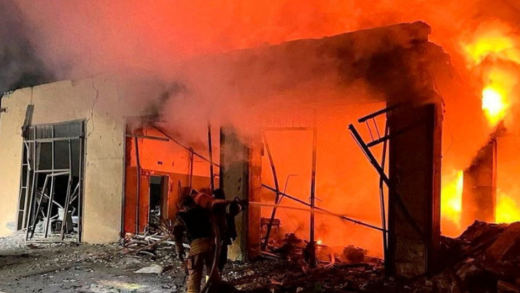UNITED NATIONS, Sep 20 (IPS) – This year has been the worst for the Amazon rainforest in almost two decades. Although there has been a measured decline in deforestation when compared to 2023, forest fires have ravaged acres of critical ecosystems. For the first eight months of this year, the Amazon has seen routine forest fires, totalling to over 53,000 recorded instances.
According to the Rainforest Foundation US, so far this year, forest fires have consumed over 13.4 million acres of the Amazon, which is roughly equivalent to the size of Costa Rica or Denmark. Additionally, according to the Amazon Watch, forest fires in the Amazon were limited to only the Brazilian and Bolivian regions in previous years. In 2024, these fires have spread to the Peruvian regions, something which has never been seen before.
The recent fires are partly a result of the El Niño drought, which has lowered the annual levels of rainfall in the Amazon. They are also a consequence of climate change and human exploitation, signaling trouble for the planet if not controlled.
“Combined, the effects of climate change, forest degradation and more forest fires could result in 60 percent of the Amazon rainforest disappearing by 2050”, stated the United Nations Environment Programme (UNEP).
The Amazon is crucial for overall planet health for a multitude of reasons. For one, it is one of the biggest carbon sinks in the world, second only to the Earth’s oceans. According to Greenpeace International, the Amazon absorbs nearly 90 to 140 billion metric tonnes of greenhouse gasses from the atmosphere. Without it, there would be a significant exacerbation of the greenhouse effect.
Dr. Elena Shevliakova, a Princeton University scientist, estimates that if the Amazon were to burn completely, Brazil and eight of its neighboring sovereignties would become “virtually uninhabitable”. Shevliakova adds that the planet would see a 25 percent decrease in rainfall and a 4.5°C increase in global temperatures.
Regions that border the Amazon are already seeing adverse effects due to the fires. Figures from IQAir state that the air quality in Manaus, the capital of the Brazilian state, Amazonas, has reached unhealthy levels. Natalia Gil, an atmospheric science expert and member of the Air Quality and Emissions Department at the Technological Laboratory of Uruguay, also observed an increase in particulate matter found in the air of surrounding nations.
Additionally, the Amazon is one of the most biodiverse ecosystems on the planet, fostering over ten percent of all of Earth’s plant and animal species. Losing this would have disastrous impacts on the world’s ecosystems as food chains would be severely disrupted, leading to widespread food insecurity. Furthermore, plant species that have significant medicinal use would go extinct, endangering the entire human population. The U.S. The National Cancer Institute estimates that 70 percent of all plants integral to cancer medications originate from the Amazon.
The livelihoods of several indigenous communities depend on the ecological health of the Amazon rainforest. According to the World Wildlife Fund (WWF), approximately 40 million people reside in the forest, including 2.2 million indigenous peoples. The Amazon Conservation Association states, “Over 400 tribes, each with a distinct culture, language, and territory, continue to live in a largely traditional manner, relying on these forests for their survival…Local people rely on Amazonian forests for daily needs such as food, water, fiber, and traditional medicine”.
For the overall wellbeing of the environment and humanity, it is imperative that there are efforts put into mitigating the impacts of human practices. UNEP is currently launching initiatives that focus on sustainable practices, biodiversity preservation, and support for indigenous communities.
IPS UN Bureau Report
Follow @IPSNewsUNBureau
Follow IPS News UN Bureau on Instagram
© Inter Press Service (2024) — All Rights ReservedOriginal source: Inter Press Service
Source link
#Forest #Fires #Amazon #Threaten #Earths #Stability


















